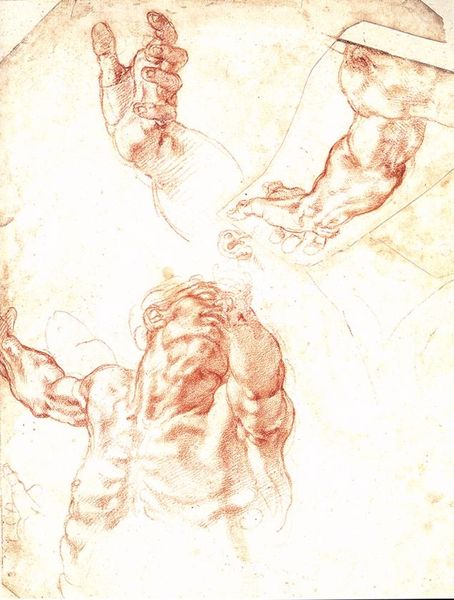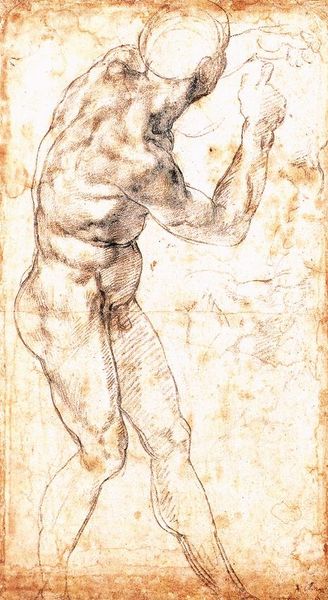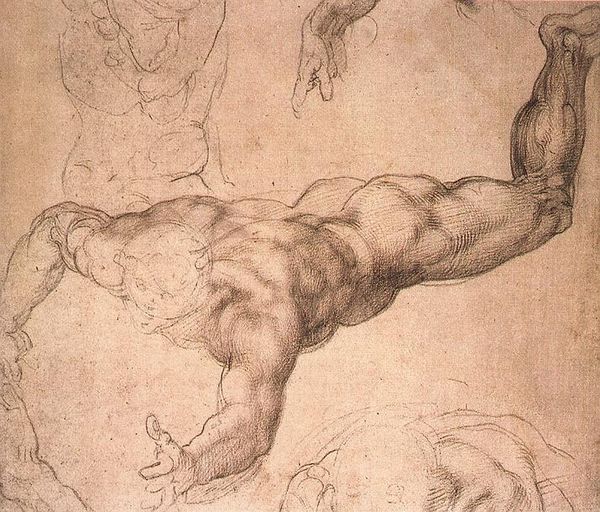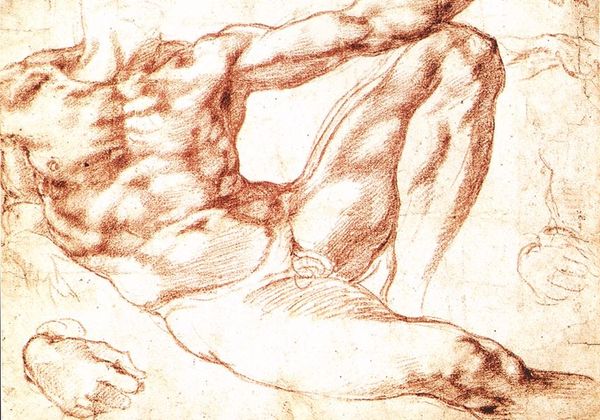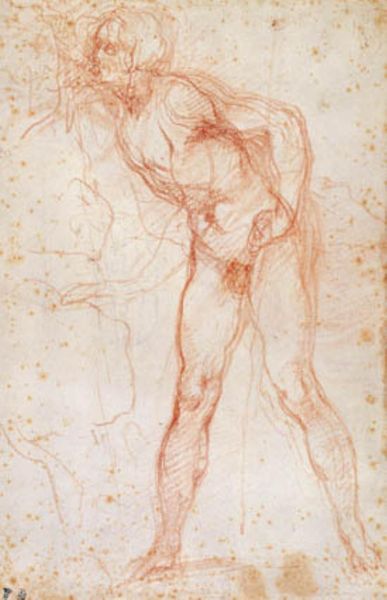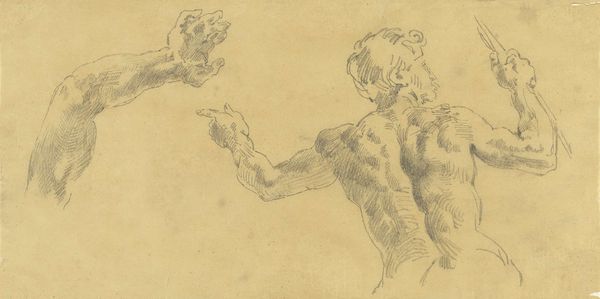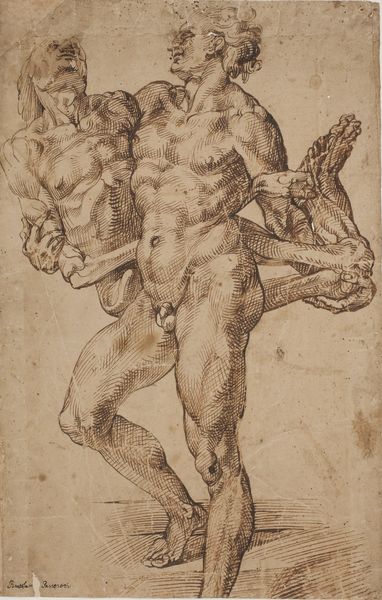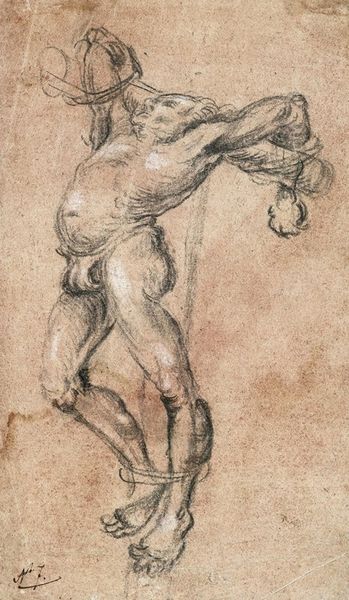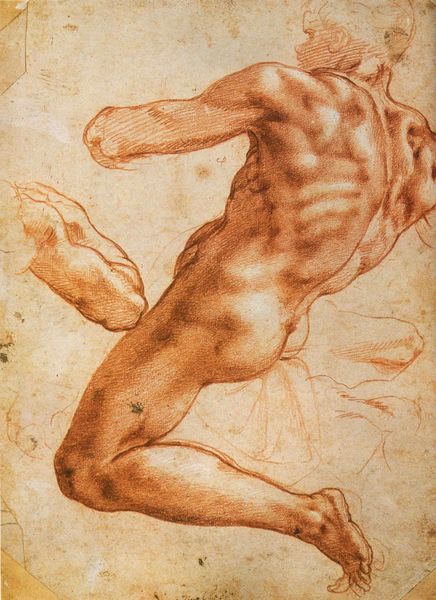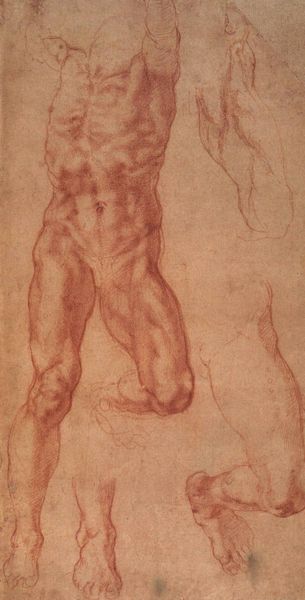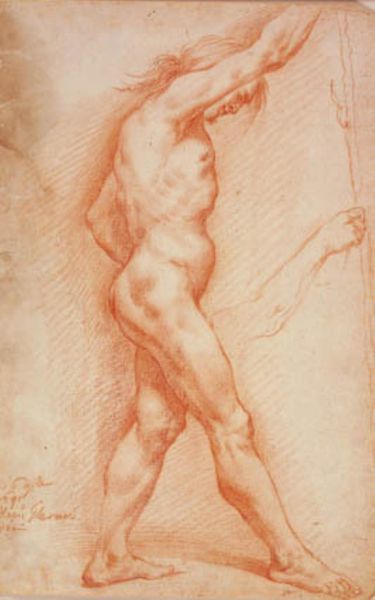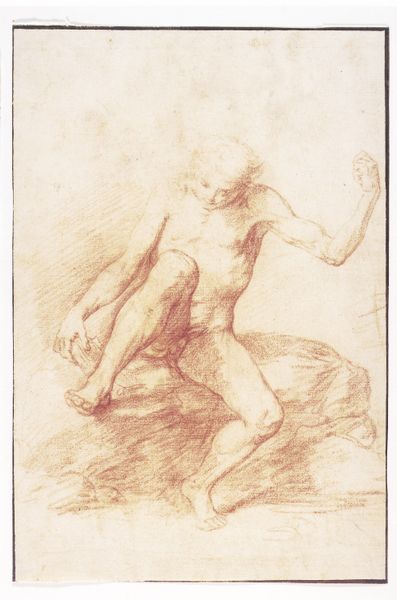
drawing, pencil, charcoal
#
portrait
#
drawing
#
high-renaissance
#
pencil sketch
#
charcoal drawing
#
figuration
#
female-nude
#
pencil drawing
#
pencil
#
mythology
#
portrait drawing
#
charcoal
#
italian-renaissance
#
nude
Copyright: Public domain
Curator: Looking at this drawing, “Study to The Libyan Sibyl,” executed around 1508 by Michelangelo, I’m struck by its almost restless energy. Editor: Restless is right. The anatomical studies practically leap off the page. There's an intense physicality and dynamism, even in a preparatory sketch like this, all rendered in red chalk. Curator: Precisely. Think about the social and intellectual currents swirling during the High Renaissance. There’s the rediscovery of classical forms, sure, but also a new emphasis on human potential, a humanist focus exemplified in Michelangelo's obsession with the nude figure. Editor: That idealized human form is always political. The Sibyl, one of the female prophets from classical mythology, appears poised to deliver pronouncements—it’s less a divine feminine and more a powerful instrument of social critique in his rendition. It prompts questions about the constraints placed on women seers and female voices generally at the time. Curator: Interesting. Viewing it through that lens provides fresh perspective on the placement of these anatomical studies on a single plane as tools of the patriarchy: an exercise in objectification of the Sibyl’s sacred authority? Editor: Yes. Though initially commissioned for the Sistine Chapel ceiling—a project orchestrated and patronized by powerful men of the church. The study in and of itself is a testament to art's function in both reinforcing power structures and enabling their subtle deconstruction. Michelangelo's detailed examination elevates the classical body to underscore themes of divine will and power. Curator: I see that in the tension. He’s negotiating divine narrative while critiquing human forms, setting the stage for broader societal reckonings to come. There is also something deeply timeless about it, its themes still relevant. Editor: Absolutely. Art gives visibility and therefore legitimacy. Engaging with these images invites dialogues around not just beauty but also broader concerns that still define societal progress and the place of those voices within the sacred realms.
Comments
No comments
Be the first to comment and join the conversation on the ultimate creative platform.
